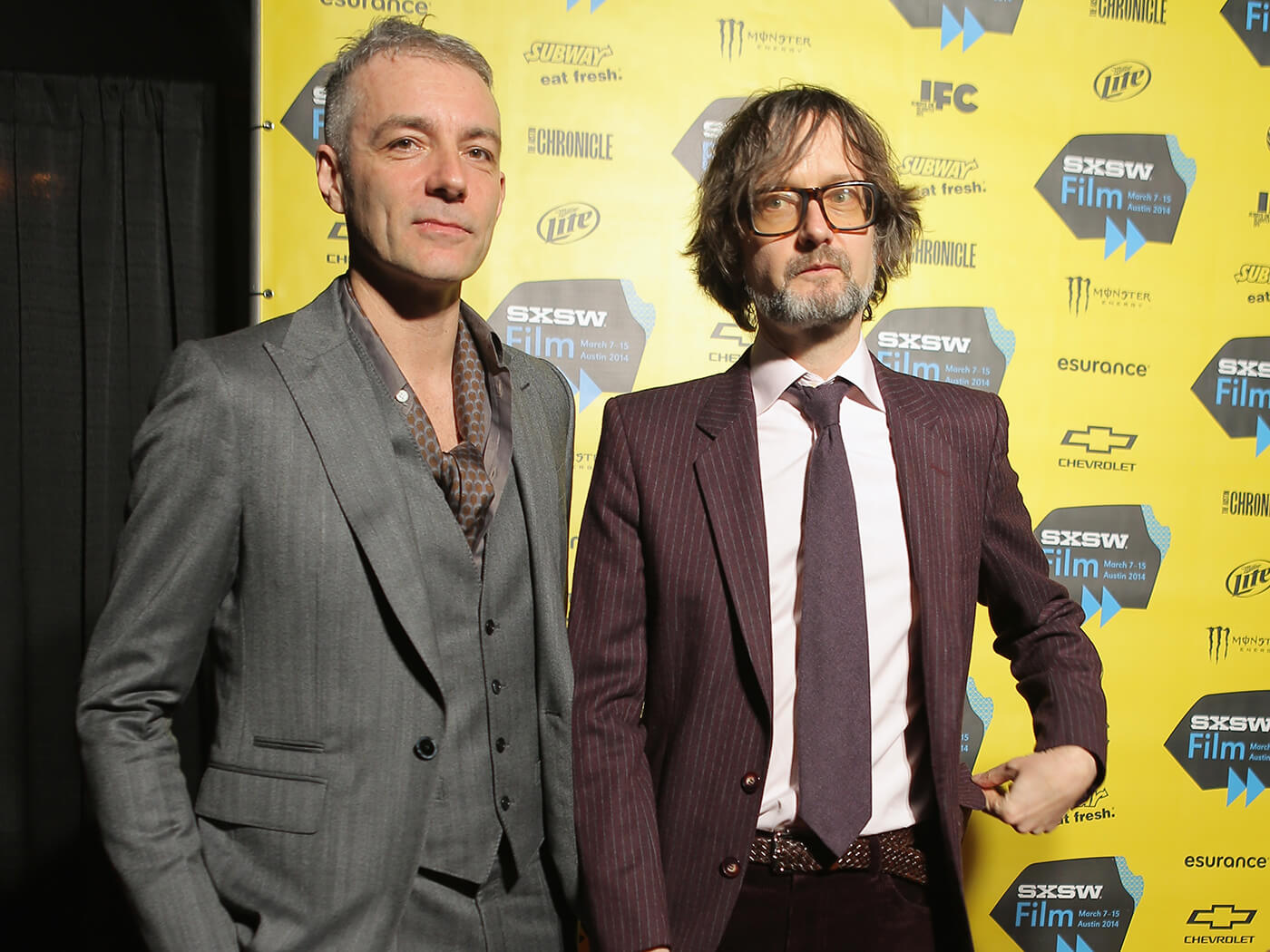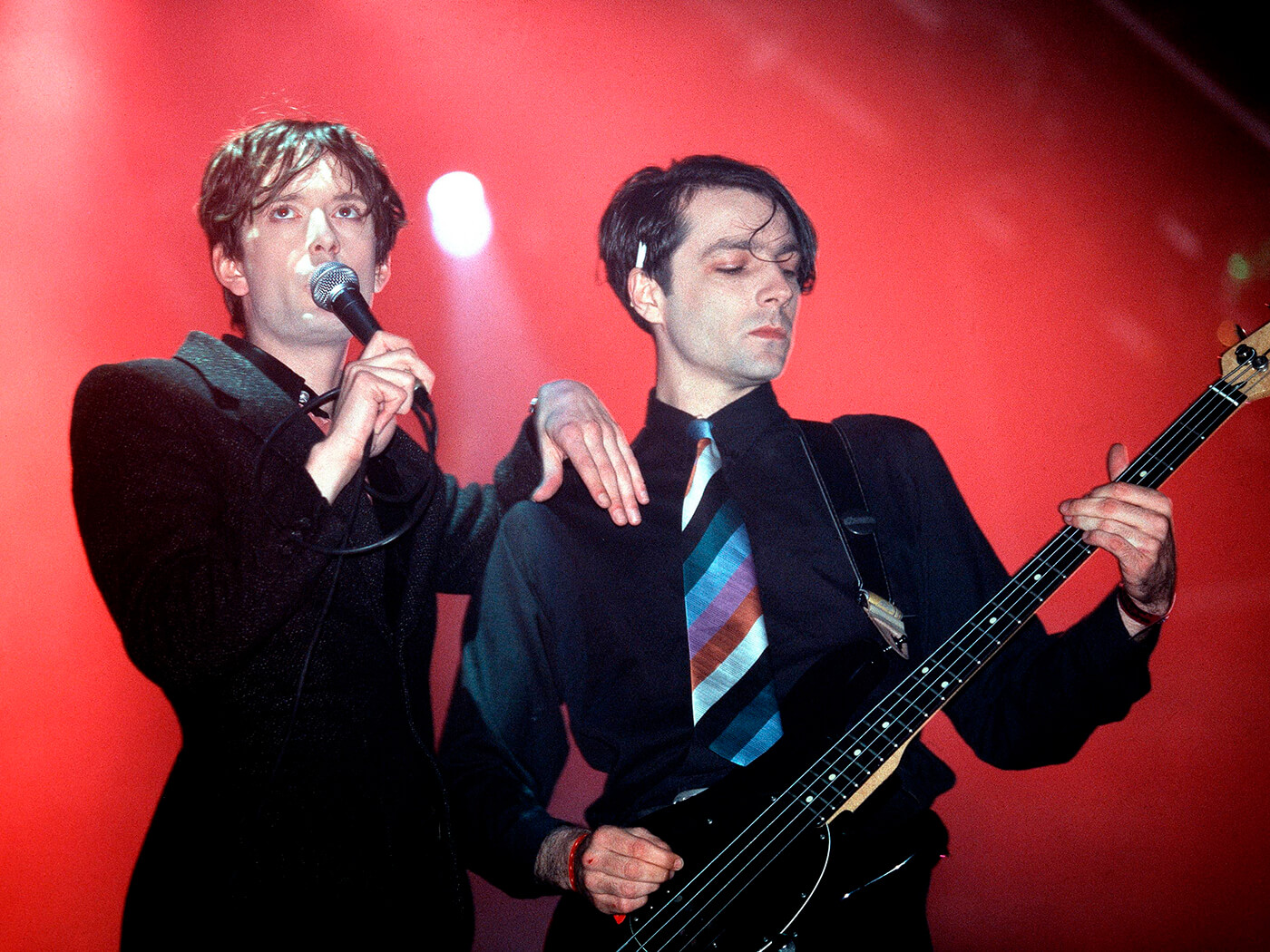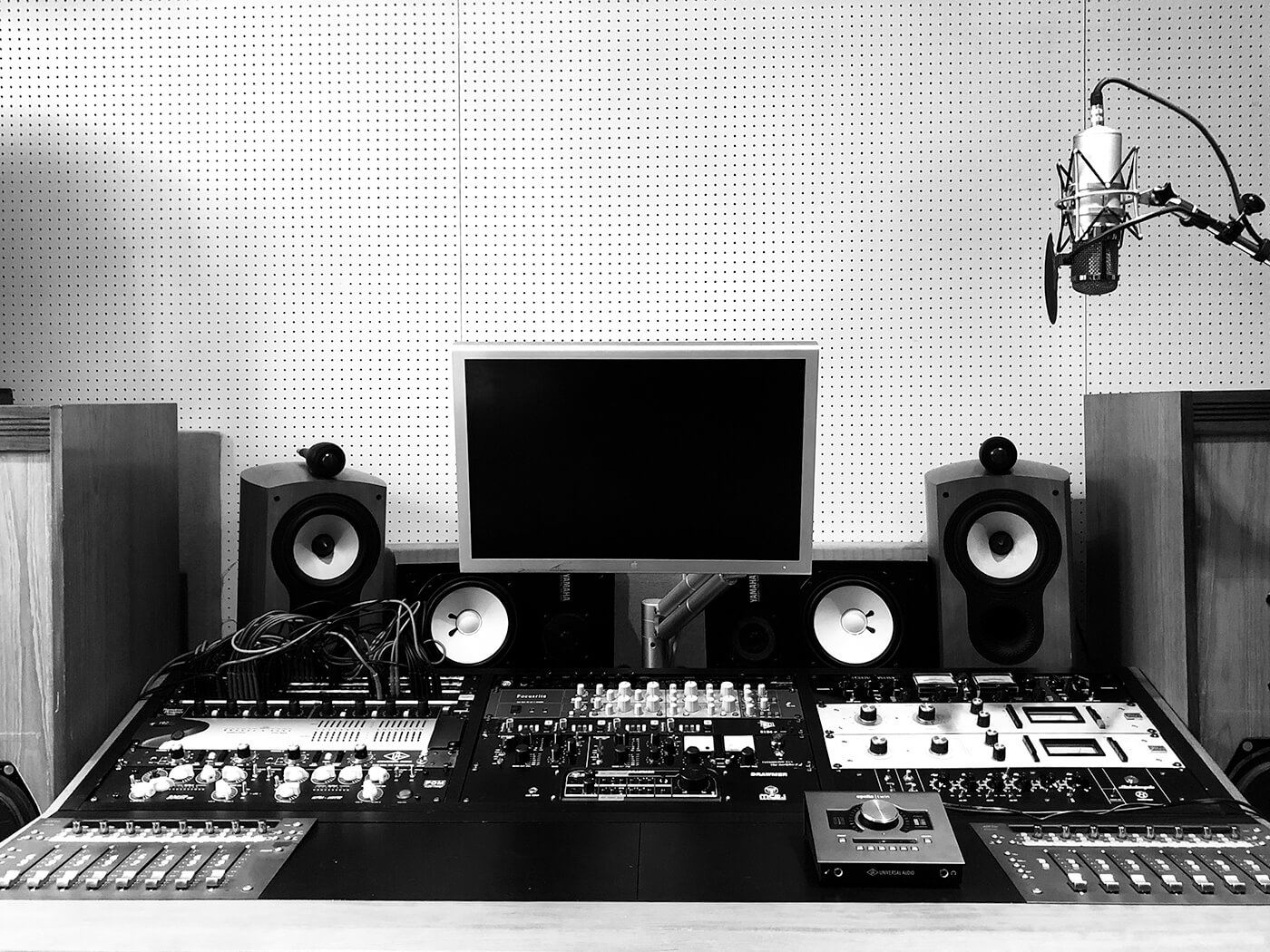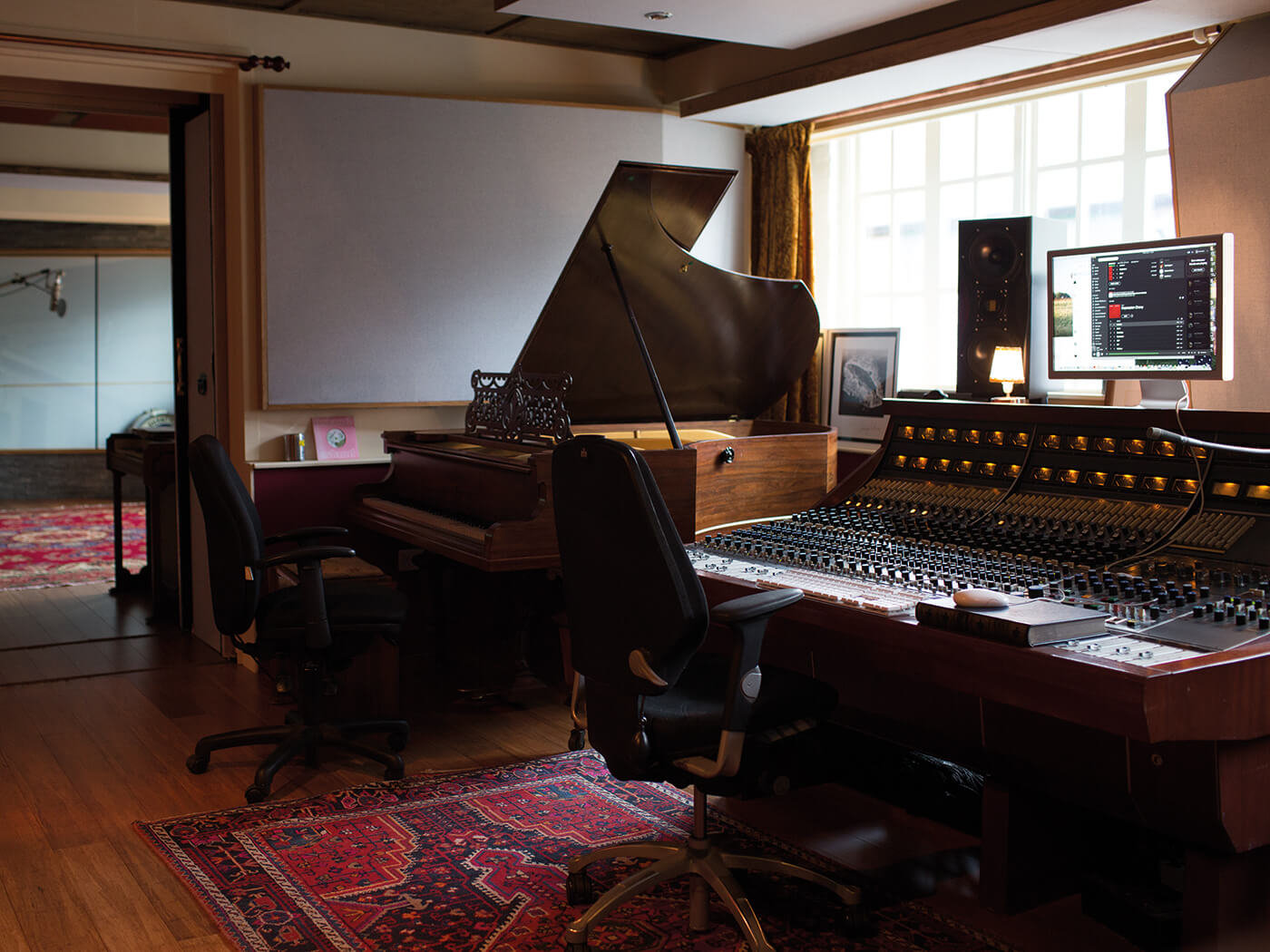Former Pulp bassist Steve Mackey on producing for M.I.A. and Arcade Fire
Steve Mackey was much loved as the well-heeled bassist in Sheffield underdogs Pulp and long-time musical accomplice of their ubiquitous frontman Jarvis Cocker. But he’s also ploughed an alternative musical furrow as a producer and remixer, energising everyone in the studio from the lo-fi ragga of M.I.A., to the stadium guitar pop of Arcade Fire. We caught up with him to trace his journey from Pulp to top producer and beyond…

Steve Mackey. Image: Gary Wolstenholme / Redferns
“I think it’s tough for new artists to do what Pulp did. Which was to be very unsuccessful for a long time,” laughs Steve Mackey. The former Pulp bassist, now anarchic production auteur, is dissecting the music industry and how it has mutated since he, Jarvis Cocker, Candida Doyle and the rest of Sheffield’s most notorious band of misshapes were at their height.
“We were grossly unsuccessful for 10 years, but it was an important time to be gestating. You pick up things and get better. But today, economics would make that more difficult to achieve.”
As any Pulp fan will know, Steve was a core member of the Britpop titans when they were at their biggest, performing on era-defining records such as Different Class and This Is Hardcore as well as near-legendary live performances at the likes of Glastonbury Festival, V, Primavera and more.
Since the group’s demise, Steve has trod a singularly intriguing musical path, working as a producer, remixer and collaborator with an array of musical renegades – from the incendiary M.I.A. and the smoky, enigmatic electronics of Dean Blunt to pop heavyweights Florence + The Machine and of course Arcade Fire – for whom his work on latest record Everything Now earned him a Grammy nod.

Alongside his studio sorcery, he’s worked as a musical director for fashion designers such as Tom Ford and created colourful sounds to accompany the work of artists including Damien Hirst. With such an eclectic CV, it’s obvious an obsessive thirst for new music rattles right through him.
“There’s more great music around than ever,” he enthuses. “There are always new forms and diversions that make me still love music, despite the lack of money for new talent. When we were in Pulp, we were fortunate that there was a little more oil in the machine. But the artists I like and want to work with now, the ones who see music as an itch they have to scratch, they will find a way to get the thing they need to do out there, regardless.”
“As a producer, you need to go in and feel like you can help get the project somewhere”
Entering the studio
The flames of Steve’s passion for production were fanned while Pulp first tasted some of their great success, working with revered producer Chris Thomas on Different Class. An album that featured the ubiquitous Common People, Disco 2000 and Sorted for E’s & Whizz.
“Chris had worked with everyone from John Cale to Pink Floyd,” recalls Steve. “At the end of the recording, he bought us this expensive digital machine, the RADAR. He just said: ‘Now go off and write your next record on this.’ It was a really kind and interesting gesture.
The darker, more jaded This Is Hardcore followed, also helmed by Thomas, while their final record, the bucolic We Love Life was overseen by the late, great Scott Walker. Shortly after this, Pulp were no more. After the band split, Jarvis and Steve entered the studio with renowned punk, Steve Albini, on the former’s first solo work.

“Because of Pulp, we had the chance to work with some of the best producers. And, when you’re around them, it’s like being an apprentice. They have 30 to 40 years of knowledge so you’re just lucky to be sharing the room with them. You can’t help but learn a lot from those situations.”
Steve’s studio excursions have always been driven by a desire to discover the most innovative talents on the cusp of exploding. He found the bedroom-based music of Mathangi ‘Maya’ Arulpragasam (aka M.I.A.) through his friendship with Elastica’s Justine Frischmann at the start of the 2000s. He couldn’t help but want to be involved from the moment he heard her.
“I had an idea about how I thought Maya’s music should sound and that gave me the confidence and determination to make sure I was part of the project,” recalls Steve. “As a producer, that’s really important when you work with someone – you need to go in and feel like you can help it get somewhere.”
After hearing Maya’s initial demos, Steve took the ideas back to his native Sheffield to look up his old musical sparring partner, Ross Orton. Ross had been making techno and electronic records from his bedroom as part of electroclash trio, The Fat Truckers. He locked creative horns with Steve and the first M.I.A. single Galang was the result. Mixing the best bits of Sheffield’s bleep lineage with raw ragga and dancehall elements, its metallic heaviness still has the power to make your speakers wobble like nothing else.
“It sounds like a very Sheffield record. If you know the city, then you’ll hear all the hallmarks of its electronic-music heritage, Warp Records and that bleep sound. But I like how it’s got Maya’s stamp on it too, all these Sri Lankan influences. Back then, not as many people mixed genres as carelessly as she liked to. I love how we made it in a bedroom but it sounds massive in a club.”
For Steve, an essential part of the producer’s role is to tease and wrestle with the creative energies of the artist. His recording sessions with Ross helped facilitate Maya’s music and support her in realising the statements she was trying to make with her music.

“Maya had a lot of energy, she was new to singing but was coming from a different kind of place as a student on a fine art course at Central St Martins. She made films and did graffiti alongside her music,” he says.
“So Maya didn’t just see it as just a record, but as something more than that, something like an art project. Me and Ross did four of five songs, then I played her some tracks by Diplo, said she should work with him and that was that. About two weeks later, they were going out.”
Go with the Flo
While Diplo and M.I.A. were mauling sound systems and turning speakers upside down, Steve threw himself into more indie-guitar projects before coming across a new, little known songwriter named Florence Welch. He helped her record what would become her first successful single, Kiss With A Fist, later included on the BRIT Award-winning debut album Lungs.
Steve remembers: “I saw Florence play a London show on her own, just singing with a floor tom. It was really weird – in a good way – I enjoyed working with her, she’s fearless if you put her in front of a mic. So when you have singers like that, your job as a producer is to just try and capture it. Some singers have an amazing voice, it’s just about giving them the confidence to do whatever it is they need to.”
Steve attributes this recording method to collaborating with the legendary Steve Albini at his Electrical Audio studio in Chicago when working on the Jarvis Cocker solo record Further Complications.
“Steve Albini is really blunt and honest, yet he refuses to give an opinion. If you asked him about a take, he’d say something like, ‘I prefer listening to that one than the one before.’ Which means the band have to make decisions. I’ve tried to include this approach of allowing the bands to self-determine in my own work. I think it’s a fascinating way of making records.”
“I’m gearing up to record some music again in September”
Blunt force
While he’s enjoyed stints at the top of the charts, Mackey’s career has seen him take on many of pop music’s more maverick talents in murkier corners of the industry. London-based musician, songwriter and art-pop dreamer Dean Blunt lives life in the latter, preferring to inhabit the cracks as opposed to the spotlight. Releasing music via a variety of aliases as well as being half of experimental duo Hype Williams, he’s deleted as many tracks as he’s dropped.
“I love him, he’s a brilliant artist, very fiercely independent. He doesn’t work like anyone else does, it’s all on his own terms. But when he comes to the studio, he’s just one of the most creative people I’ve ever seen,” Steve says.
So with someone so opposed to the idea of music as a full-time career, how do you help them unlock their creative potential and get the best from them when in the studio?

“I’d spend a day before he comes in making the studio ready, so when he entered, he’d have a whole sonic arsenal at his disposal. I’d make sure there are things like tape delays in place and sub-bass, two or three drum machines with some good sounds, a couple of sequencers. I’d create a palette without even discussing it. I learned quickly that if you just put the sounds in front of him, then it’s like lighting a wildfire.”
Dean’s approach to his career, and opposition to the standard expectation to self promote is certainly different, but is a somewhat refreshing, daring antidote to how music marketing traditionally works.
“We’d write all day, then after we left the studio, I’d be thinking about how good the music was sounding. I’d get to the studio the next morning and he would have put the new songs on the internet the previous night. Then he’d delete them five days later. He’d use fake social-media accounts to release these tracks, but he didn’t care who was listening or what the label thought. He had a really liberating, really punk approach.”
Everything now
Steve’s studio dexterity and the esteem in which his skills behind the dials are revered are glaringly apparent from his time with Arcade Fire, making their stadium-sized, Grammy-nominated set Everything Now. He was one of the architects of the ambitious album, alongside Daft Punk’s Thomas Bangalter and Geoff Barrow from Portishead.
“Win Butler from the band invited me to New Orleans to their studio back in 2015, where they had this amazing small studio built around an old UA 610 desk,” explains Steve.
“It’s similar to what Neil Young used on his big recordings like Harvest Moon. But the room was full of synths, drum machines – it was a really great analogue setup – 16-track tape machine in there with this desk, loads of 808s, 909s. I was like, ‘Okay, this is going to be a different kind of Arcade Fire record.’
The album was made with a real cavalcade of musicians at the band’s Montreal base, then at Daft Punk’s studio in Paris. “Win is an amazing talent, but to be honest, anyone in the band could have produced it. They’re all incredible musicians and recording engineers. If you’ve ever seen them live, then you know they have it going on.”
“Bands want someone they can trust and who is as committed as them to making brilliant art together”
New glory days
Steve’s more recent work has included remixing 79rs Gang, a fantastically exciting outfit from New Orleans, and assisting the brilliant Jason Pierce in helping him dots the i’s and cross the t’s on the latest Spiritualized album.
“Jason had made a lot of the most recent record in his bedroom. It’s a sign of the times really, as it was still a big ambitious record with choirs and strings. But because of how the industry is, he’d made a lot of it at home. My role was just to be someone to help him agree he’d finished it.”
Steve is also part of the Call This Number TV project with Douglas Hart, an artist and one time member of The Jesus And Mary Chain. “Douglas is great, he has this fantastic passion for underground music and cinema. We’ve been making lots of films, but this has come to an end. I’m gearing up to record some music again in September.”
Always on
Currently based out of West London’s Hoxa HQ studios, previously owned by Edywn Collins, Steve won’t be drawn on who his next studio project is with. But he will say how he balances a love for analogue sounds with the practicalities of digital when working on his music.
“I’m totally happy making records in a digital way if it’s the right sound for the project,” he says of his creative methods. “For me, the difference between digital and analogue is just about workflow rather than sound.
“My studio is somewhere for recording overdubs and mixing and it’s pretty Pro Tools based, has some good converters, lots of old tape echoes and reverbs, pedals, synths, drum machines. In terms of favourites, I like analogue on reverbs and delays, as I think it encourages artists to get involved with them. Persuading artists to turn dials and do extreme things in the studio is exciting, so I always try to set the studio up in a way that will encourage them to experiment and go mental.”
Much of the studio environment Steve hopes to create for his collaborators is based on what he experienced (or didn’t) during his time with Pulp. Working with so many unique talents means he tries to avoid dictating proceedings, instead helping provide a fertile audio world from which they can be at ease to create.

“You should be able to walk into any studio, play music and it be captured. I like the idea of musical stations that are always switched on, always on record – and if anyone comes in and starts playing, then it’s as simple as running the tape. That should always happen.”
As well as the practicalities of the studio, Steve feels that the role of the producer is also to help remove any psychological distractions or mental hurdles obstructing a great recording. “A lot of getting a good performance from musicians is about removing the obstacles in the way,” Steve says. “And the obstacle can be anything, emotional or practical. It’s about making sure people are switched on and ready to go.”
“Beyond that, it’s about having good honest relationships. If people want feedback, then you give it to them. The artists I work with, people like Arcade Fire or Dean Blunt, they want someone they can trust and who is as committed as them to making brilliant art together.”
It’s the importance of relationships between the producer and artist that Steve believes is the secret to enjoying serious success in the studio, something that stems from finding the most exciting talent to work with.
“You can make great music with people close to you, who think like you and have a similar aesthetic and taste. But it’s about finding good music, artists you think are exciting. You need to go out and track them down. Then once you have, the majority know what they want and want to do. Your role is just to give them that bit of help and support in getting there.”
Visit Steve’s official website for more information about his production work. For more interviews, check here.